Noise gates and suppressors are an essential device for any guitar player, but especially for those of us who stay in the high-gain realm. I’m thinking hard rock and metal guitarists, for example. But noise gates also have their place for clean and dirty players.
If you’re using a lot of guitar pedals, it’s a possibility that you could even be producing some noise that a suppressor could handle. Thankfully, almost all noise gates/suppressors are easy to use. Some of them have 3-4 controls, but many of them have just one.
To use a noise gate/suppressor, first, get your signal chain placement right. Most guitarists recommend using the 4-cable method with the amplifier’s effects loop to suppress noise between the pre-amp and power amp, as well as from the guitar’s pick-ups. Then, set the threshold to around -20dB.
I think what I’ve stated here in the bolded section is the brunt of how to use a noise gate, but there are a few tips I think I could share. As I said, signal chain placement is very important when using a noise gate, so I’ll give a few tips regarding this factor. Additionally, I’ll share a few other ideas you may never have thought of before.
13 Tips for Using A Noise Gate Pedal
I highly recommend checking out this video down here, which is very underrated, in my opinion. Don’t let the title turn you away – it’s about more than just the “double gate” technique, also called the 4-cable method.
I’m not sure what his name is, but buddy does a great job explaining what causes noise, how to eliminate it, and also the various ways that you can use a noise gate.
1) Understand Where Noise Comes From
Pick-Ups
![Guitar Pickups - How to Use A Noise Gate/Suppressor Pedal [Dead Simple]](https://travelingguitarist.com/wp-content/uploads/2022/06/Guitar-Pickups-How-to-Use-A-Noise-GateSuppressor-Pedal-Dead-Simple.jpg)
As I’ll talk about in a minute, the pick-ups are often a tremendous source of noise in your guitar rig. The best way to get rid of this is to put a noise gate right in the primary signal chain in front of the amplifier.
Pre-Amplifier
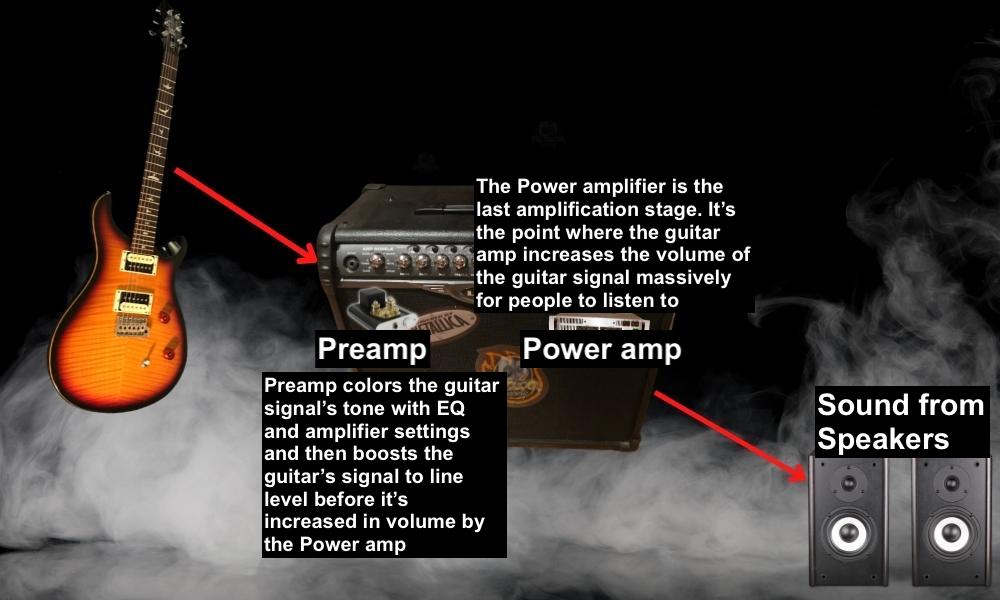
Another place where noises come from is in the pre-amplifier within the guitar amplifier. In case you don’t know, a guitar amp essentially has two stages. A pre-amplifier and a power amplifier (this is a simplistic explanation by the way).
The pre-amplifier is the part of the amp that takes the vibrations from the guitar pick-ups and strings and amplifies them up to line level before the power amplifier takes over and jacks the signal way up before it’s outputted as sound by the speaker.
Guitar Pedals
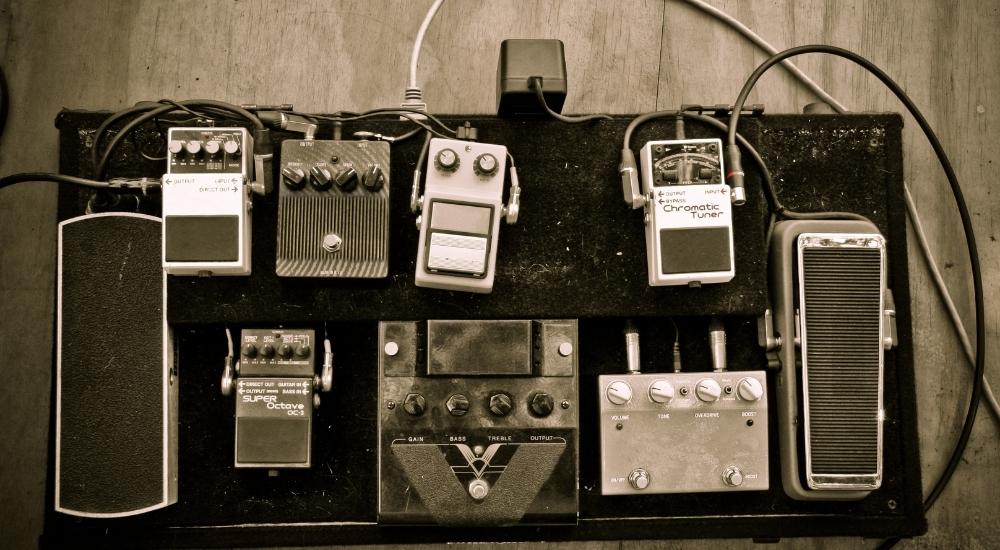
Guitar pedals can often be a source of noise as well, especially high-gain pedals, distortion pedals, or any pedal that increases the noise floor with gain. How you give power to the pedals can also determine how noisy they are too.
Power Source
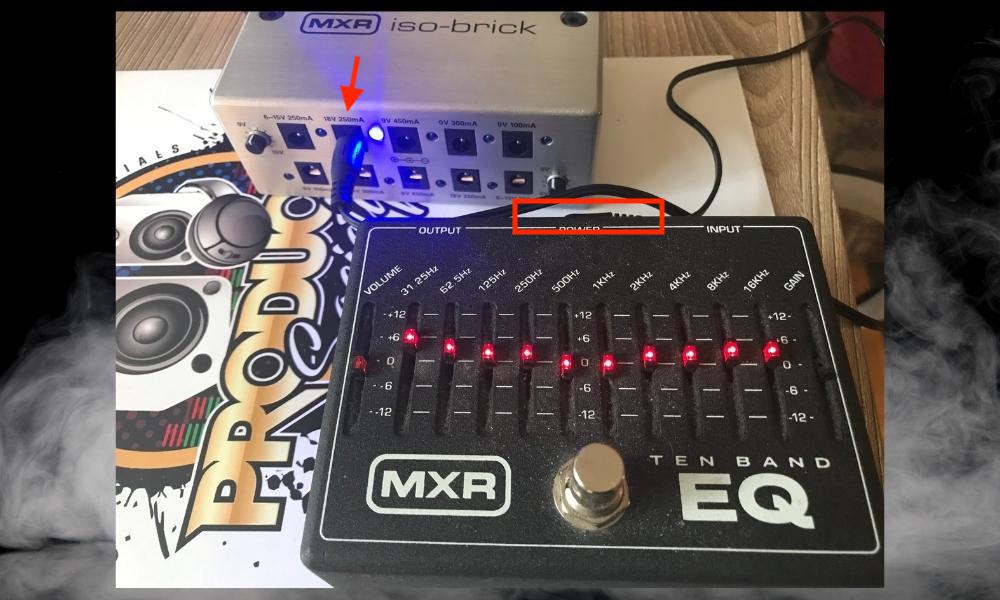
It’s not uncommon for people to complain that how they’re powering their rig has an impact on the noise. I’m not sure how true this is, but I know that some people use what’s called a power conditioner to eliminate this problem as I briefly mentioned in this article.
Other Sources
![Electronics - How to Use A Noise GateSuppressor Pedal [Dead Simple]](https://travelingguitarist.com/wp-content/uploads/2022/06/Electronics-How-to-Use-A-Noise-GateSuppressor-Pedal-Dead-Simple.jpg)
And finally, you have the sources of noise that are way less common but people talk about sometimes, ie, ceiling fans, other electronics, laptops, computers, even things like radios. While this sounds crazy, it’s true some of this stuff can transmit through your amp.
This will make me sound nuts but with my Fender mini amplifier, it often picks up on radio interference. I’m not sure why this is the case, but it does happen.
2) Set the Threshold Around -35dB to -50dB to Reduce the Noise
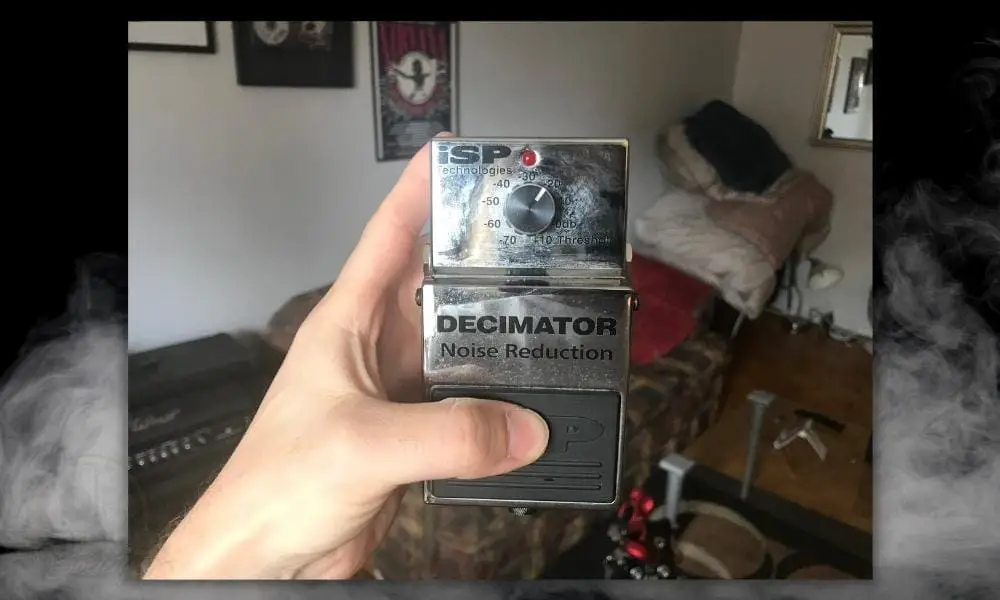
What parameter you set your noise gate to obviously depends on the product or model type. For example, I use an ISP Decimator guitar pedal that I got awhile back (on my Product Page), and I find that setting the threshold to -35dB is how I get the noise to stop.
This is 10:30 – 11:00 pm if we compare this to how it looks on a clock. For most people, a noise gate is to eliminate all of the hiss and buzzing that occurs the moment you stop playing.
Leave your guitar muted like that, and then slowly increase the threshold on your noise gate until it cuts out all of the undesirable sounds, without negatively impacting your sustain in a significant or noticeable way.
3) Understand That Signal Chain Placement Makes A Big Difference
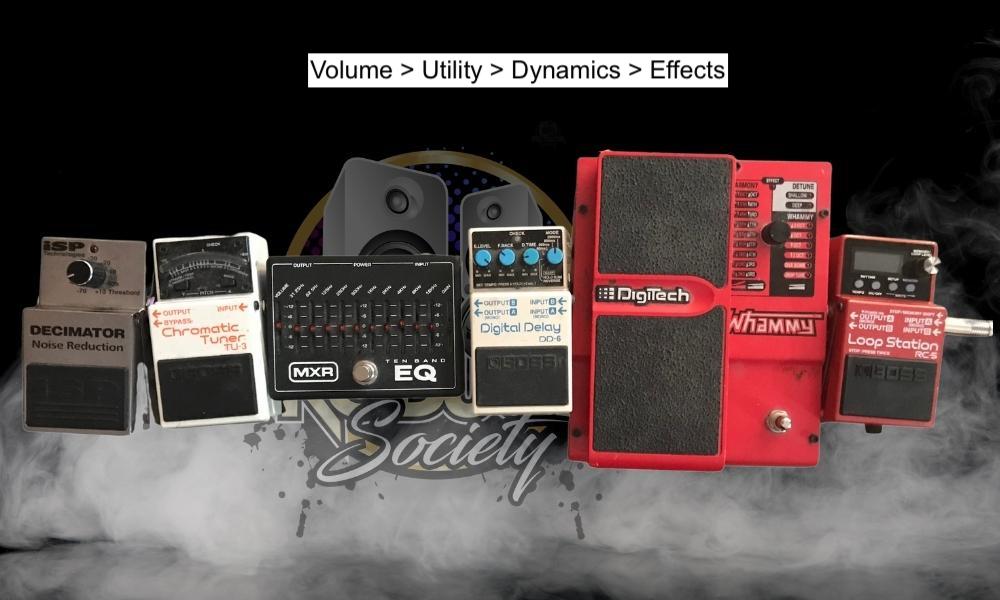
As I was saying at the start of the article, exactly where you put the noise gate in your signal chain plays as much of a role in how it works as how you use it. I previously put the noise gate after everything else in my chain and I find this method works just fine.
But it turns out there are even better ways of connecting a noise gate to your amplifier. There are ways where you can get more functionality and control out of it, so let’s talk about the first (and probably the best) way now – the 4-cable method.
4) Use the 4-Cable Method [X-Method] (If You Have Send/Return)
![4 Cable Noise Gate Method - How to Use A Noise GateSuppressor Pedal [Dead Simple]](https://travelingguitarist.com/wp-content/uploads/2022/06/4-Cable-Noise-Gate-Method-How-to-Use-A-Noise-GateSuppressor-Pedal-Dead-Simple.jpg)
Guitar Input > Input of Noise Gate
Noise Gate Pedal Return > Effects Loop Send
Noise Gate Pedal Output > Effects Loop Return
Noise Gate Send > Distortion Pedal Input
Distortion Pedal Input > Amplifier Input
The 4-cable method or “X” method for connecting a noise gate pedal in your signal chain is the best way to eliminate noise. The reason is that it eliminates the noise between the pre-amplifier and power amplifier, while also attenuating the guitar pick-up noise.
For example, if you were to put the noise gate in just the effects loop of the amplifier, you would only eliminate the noise from the pre-amplifier, but not necessarily from the guitar.
5) Or Place the Noise Gate After the Noisest Pedal
![Noise Gate After EQ - How to Use A Noise Gate/Suppressor Pedal [Dead Simple]](https://travelingguitarist.com/wp-content/uploads/2022/06/Noise-Gate-After-EQ-How-to-Use-A-Noise-GateSuppressor-Pedal-Dead-Simple.jpg)
Another great way to set up the noise gate in your signal chain is to simply place it after the most troublesome pedals, ie, EQ pedals, gain, and distortion pedals. Essentially, any pedal that raises the noise floor with gain, which many of them do.
For example, I have the MXR 10-Band EQ which I wrote about in my guide, and while I love using it, it’s quite noisy (one reason why I recommend getting the newer one on Amazon instead). I put my noise gate right after it to eliminate its nasty hiss.
6) Avoid Having the Noise Gate Before Time-Based FX
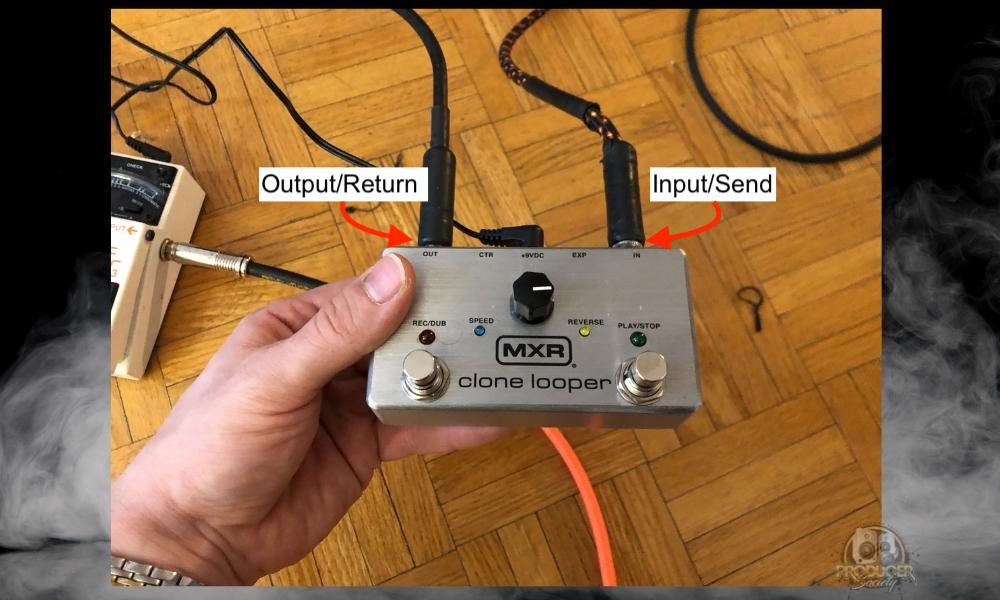
Another thing you want to watch out for when using a noise gate/suppressor is your time-based effects. Putting your time-based effects in the Effects Loop of your amplifier will completely avoid this problem in most cases, but not everyone has an FX loop.

If you choose to put your noise gate in the regular signal path, ie, between the guitar and amp and not the FX Loop, ensure you haven’t put the noise gate before these effects because you could attenuate or dampen their effect.
7) Watch How Much Sustain The Gate Is Removing
![Sustain Pedal - How to Use A Noise Gate/Suppressor Pedal [Dead Simple]](https://travelingguitarist.com/wp-content/uploads/2022/06/Sustain-Pedal-How-to-Use-A-Noise-GateSuppressor-Pedal-Dead-Simple.jpg)
A lot of people talk badly about noise gates and noise suppressors because they purportedly are “tone-sucks,” but this is just nit-picking in my opinion. That said, it is true that a noise gate can remove a bit of sustain from your tone.
You can remove other high-frequency information as well with a noise gate, which you may not want to do. This means that it’s prudent to pay attention to how strong your gate is.
I usually have mine set as weak as I possibly can. Just to the point where it removes the sounds that I want to eliminate and no more than that.
8) Get A Noise Gate With Return/Send and More Controls
![Noise Gate Silencer and Decimator - How to Use A Noise GateSuppressor Pedal [Dead Simple]](https://travelingguitarist.com/wp-content/uploads/2022/06/Noise-Gate-Silencer-and-Decimator-How-to-Use-A-Noise-GateSuppressor-Pedal-Dead-Simple.jpg)
This is a piece of advice that I haven’t followed yet, myself. I’m using a very old ISP Decimator. Not even the ISP Decimator II or the G-String version, but the first rendition of the Decimator.
It cost an arm and a leg, and knowing what I know now, I probably would’ve avoided buying it because of the lack of complexity and controls.
If I were to get a new noise gate, I would probably get the Electro-Harmonix Silencer because it looks really cool and it has the reduction and release parameters and the FX loop option as well (the most important feature, to be honest).
The reduction knob controls by how much you’re suppressing undesirable sounds, and the release is how fast the noise suppressor lets go of the signal after it has attenuated it. This gives you more options for precisely how you control noise.
For full control of your noise-gating and suppression powers, you’ll want more than just a threshold knob and simple input and output. Additionally, you can put the noise gate in the FX Loop of your amplifier.
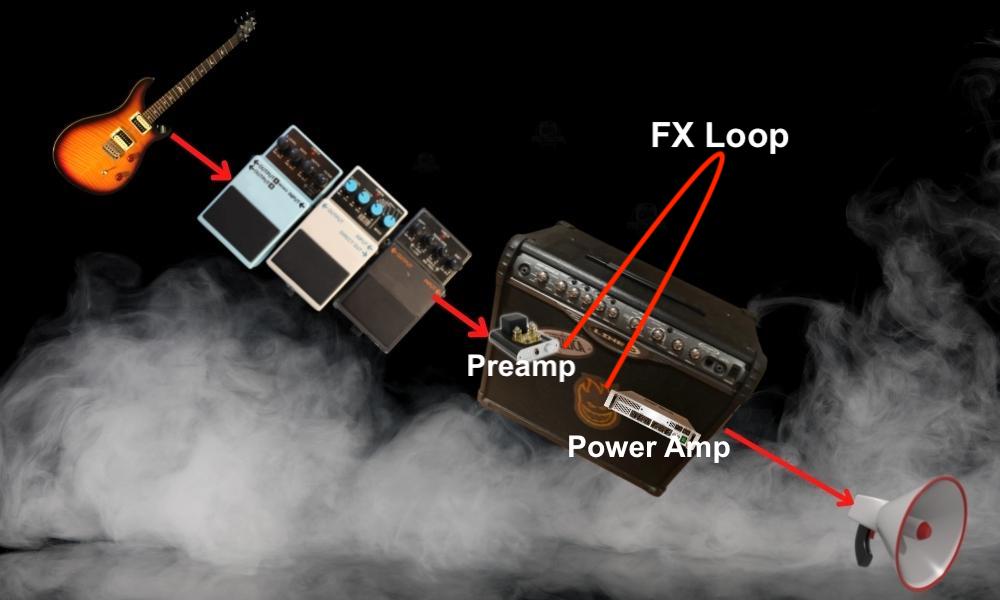
What does this mean? It means that you can decrease the undesirable sounds between the pre-amplifier and the power amplifier inside your amplifier, while at the same time attenuating the noise that’s caused by your pedals and guitar.
9) Use More Than One Noise Gate
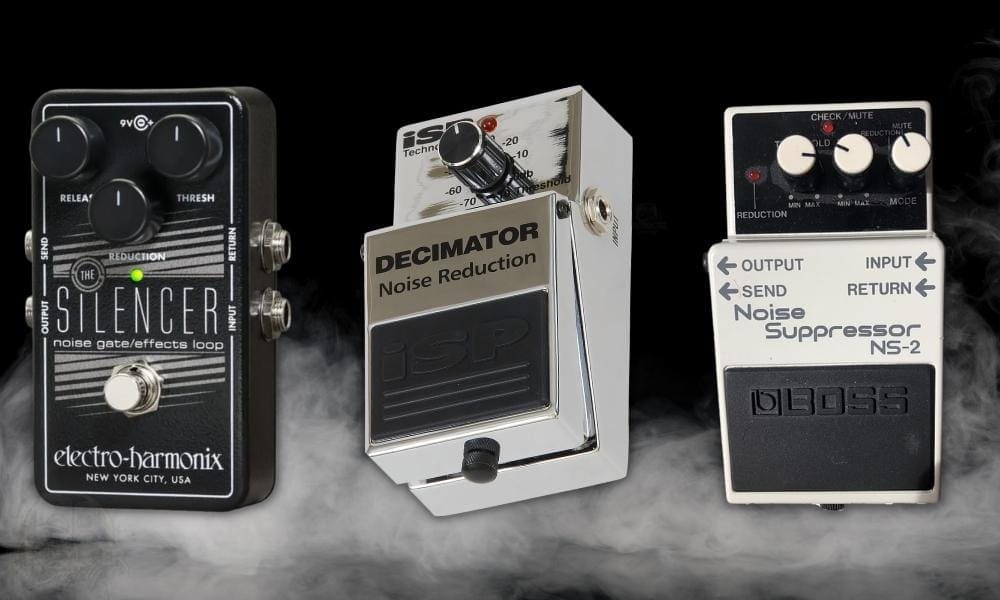
It’s not uncommon for guitarists who use high-gain rigs to employ several noise gates. From what I understand, even Misha Mansoor from Periphery had a set-up at one point that involved 3 noise gates, although, this could be just a rumor.
Regardless of whether he did or not, using multiple noise gates properly can do a few things for you. You can take care of the noise that comes from a specific pedal while attenuating noise from the pre-amplifier and the power amplifier.
Using the 4-cable method is an awesome way to get the most bang for your buck. The reason why is that it can take care of the noise from the pre and power amp and the noise in front of the amp that comes from the guitar.
But if there is a specific pedal in your set-up that needs a gate because of excessive noise, you could always set up a 2nd noise gate to eliminate it. Noise comes from all places.
It comes from the pre-amp, it comes from other pedals, and it comes from your guitar pick-ups. Is it isn’t going to hurt to have more than one noise gate in your set-up, so don’t worry if you have more than one of them.
As a matter of fact, some noise gates are designed to be used with others, like the ISP Decimator II G-String, for example, can be used to link up to other ISP Decimators using the Link In/Link Out ports.
10) Understand That Single Pick-Ups Are Often The Noisest
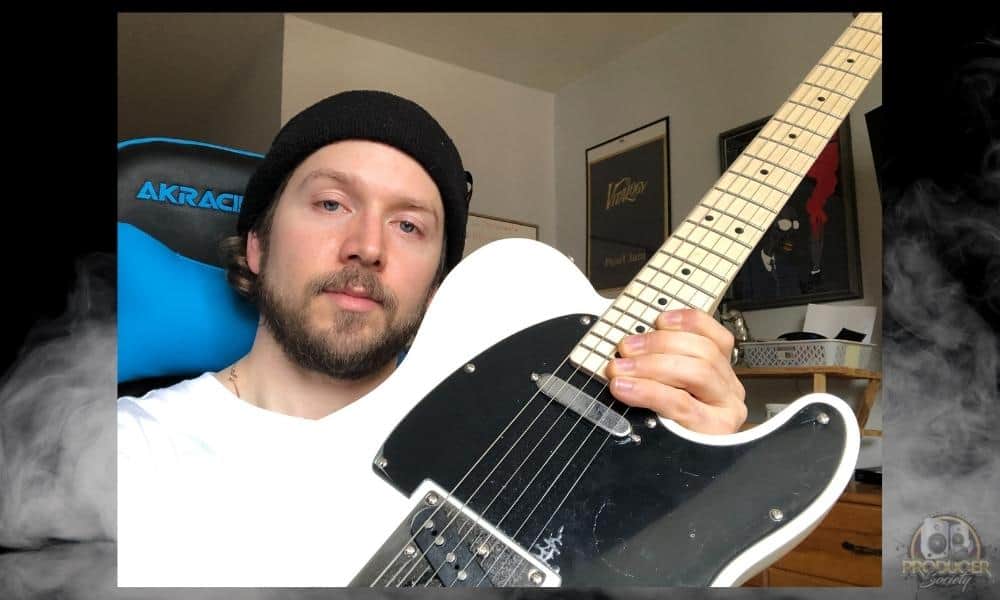
From what I’ve been told, Telecasters are famous for being noisy. And that noise apparently comes from the single-coil pickups. You can see that pickup right underneath my hand on the guitar’s neck.
Simply put, if you’re using a guitar with single-coil pick-ups, just be mindful that you may have extra noise. In this case, especially if you’re using a high-gain rig, it may be an essential part of your setup to have more than one gate/suppressor.
11) Try Using A Downward Expander Instead of a Gate
![Electro Harmonix Silencer - How to Use A Noise GateSuppressor Pedal [Dead Simple]](https://travelingguitarist.com/wp-content/uploads/2022/06/Electro-Harmonix-Silencer-How-to-Use-A-Noise-GateSuppressor-Pedal-Dead-Simple.jpg)
There’s a difference between a noise gate and a noise suppressor. A noise gate is like a brick wall for noise. The moment it hits a particular threshold, the noise gate will come down on that noise and cut it out completely and totally.
Suppressors or noise reducers, on the other hand, will just reduce or decrease the noise but not cut it out completely. In some cases, it may actually be wise to combine noise gates and suppressors.
One could be used for cutting out noise between silent parts, while the other one can be used for shaping dynamics. A lot can be done with this equipment, so see what you can come up with.
12) Daisy Chaining Will Often Make Noise Worse
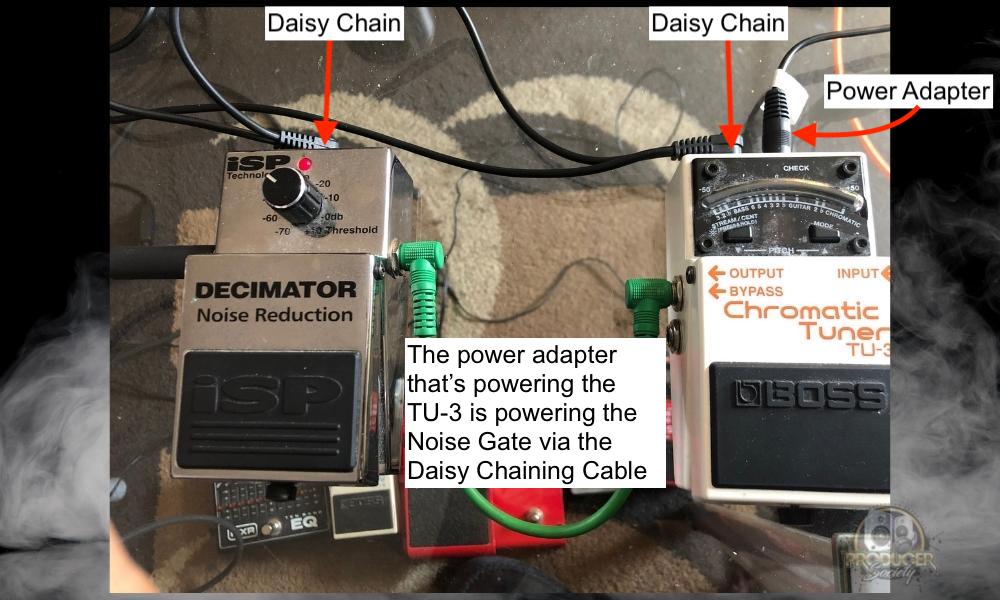
How you power your pedals will also play a big role in how noisy your guitar rig is. If you’re using a daisy-chaining setup, you could be dealing with a lot of extraneous noises. For that reason, it may be wise to use something like the MXR Iso-Brick instead.
As I’ve written about here, the Iso-Brick does what the name implies – it supplies isolated power to each pedal as a way of ensuring each pedal gets its own power, therefore, reducing noise.
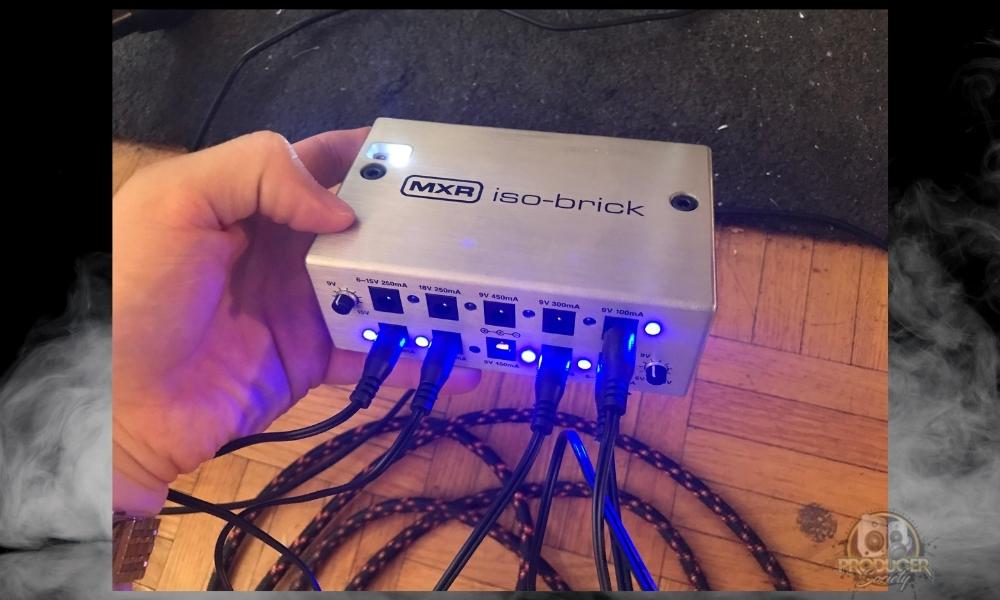
On the other hand, you could use the daisy-chaining method instead, which is when you use the power adapter from one pedal and use that same power source for another.
This works great and it’s a solid way to save money and space, but excessive noise is a problem. Simply put, if you are going to use a noise gate, understand that how you power your pedals is going to play a huge role in the noise of your set-up.
It might be the case that you have to buy something like the MXR Iso-Brick or a Voodoo Labs power supply if you truly want to use your noise gate/suppressor at its maximum potential. This brings me to my next point on powering your pedals.
13) Keep the Patch Cables Away from the Power Cables
![Inline Pedal Adapter - How to Use A Noise Gate/Suppressor Pedal [Dead Simple]](https://travelingguitarist.com/wp-content/uploads/2022/06/Inline-Pedal-Adapter-How-to-Use-A-Noise-GateSuppressor-Pedal-Dead-Simple.jpg)
One piece of advice that I was recently given by someone with more experience than me was to avoid having the power cables near your patch cables. The patch cables are the cables that connect the pedals.
Whereas the power cables are the cables that are used to send power to them. You want to ensure they have been clearly separated, otherwise, you may run into noise, humming, and other unwanted interferences.
I like using the 1/4″ Planet wave adapters that aren’t really cables, they’re more like connectors. These ensure that you won’t have this issue, however, what I don’t like is they can produce unbalanced pedals.
By “unbalanced,” I mean that when you step on one pedal, you inadvertently raise the other one next to it because there is no lee-way that an actual cable would provide.
Important Things to Note About Using A Noise Gate Pedal
1) Experiment With What Works Best For You
There are many different ways to organize a utility pedal like a noise gate in your signal chain. Furthermore, there are many different ways you can use one as well. Experiment using some of the tips I’ve provided above to see what works for you.


 Written By :
Written By :
